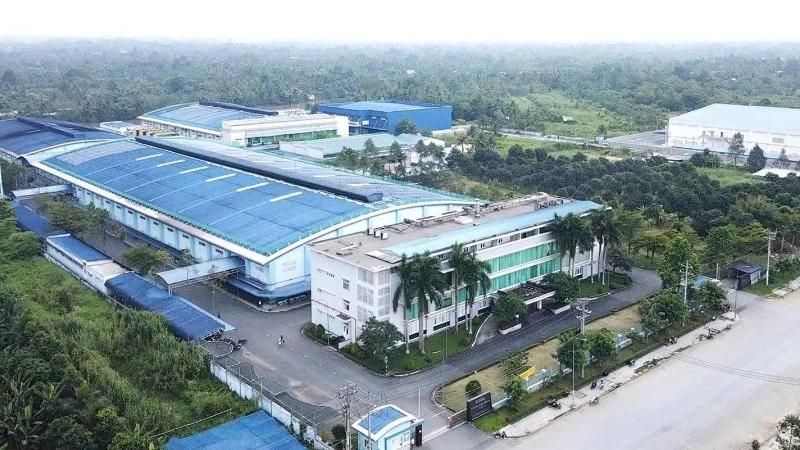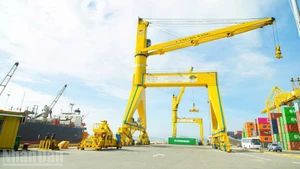The recovery of the global economy is an important driving force for Vietnam’s seafood exports in 2025. Consumption demand in major markets such as China, the US, the EU and Japan is forecast to grow positively. In addition, emerging markets such as Africa, Southeast Asia and the Middle East have also opened up great opportunities thanks to the increasing demand for quality seafood products.
Steady development of key markets
According to the Vietnam Association of Seafood Exporters and Producers (VASEP), the country’s seafood exports in 2024 will reach 10 billion USD, up 12.7% compared to 2023. The two main products contributing the most to this figure are shrimp and pangasius, accounting for 60% of total export turnover. Shrimp exports reached 4 billion USD, and pangasius exports are estimated at 2 billion USD.
In the seafood group, despite many difficulties in raw materials, tuna exports still brought in 1 billion USD. In the last months of 2024, seafood exports “accelerated” strongly, marked by October, when export revenue reached 1.1 billion USD. This is also the first time in 27 months, since June 2022, that monthly seafood exports have returned to the billion USD mark.
The growth in seafood exports in 2024 came from the breakthrough of key markets when the export value to many major consumption markets recorded double-digit growth. The second half of 2024 marked a strong recovery of Vietnam’s main export markets, in which the US and China play a leading role in bringing Vietnam’s seafood export ship back to the growth highway.
The US has always been an important import market for Vietnamese seafood in recent years. Seafood export turnover to the US in the past six years has fluctuated from 1.5-2.1 billion USD/year. By the end of November 2024, Vietnam’s seafood exports to the US reached 1.7 billion USD, up 15% over the same period in 2023. In 2024, seafood exports to this market reached 1.8 billion USD, up nearly 17% over the same period, in which Vietnam’s two main products, shrimp and pangasius, both increased sharply.
Although facing strict protectionist policies, such as anti-dumping and anti-subsidy taxes, the demand of the US market is still very large and the increasingly improved quality of Vietnamese seafood has helped maintain and expand its position in this market. The specific trade policies of the US under President-elect Donald Trump may create opportunities and challenges for Vietnam's seafood exports in the coming time.
VASEP General Secretary Truong Dinh Hoe said that Vietnam's seafood export turnover to China in 2024 will continue to grow strongly, reaching 1.9 billion USD, becoming Vietnam's largest seafood import market. Although pangasius exports to China have decreased, white-leg shrimp, lobster, crab, and snail exports have all increased sharply, showing that the consumption demand in China is massive and contributes a vital role to the overall export result of 10 billion USD for the entire seafood industry. The opportunity to export Vietnamese seafood to China in 2025 is still very large due to the strong market consumption demand, especially for fresh, high-end products such as lobster, crab, snail, clam, mussels, etc.
In the EU market, where seafood consumption and import prices are gradually recovering, Vietnamese seafood has a great advantage thanks to the EVFTA Agreement. The products that enjoyed incentives after the Agreement took effect grew positively, typically raw shrimp products when the EU tax rate was reduced to 0%.
It is forecasted that the structure of Vietnam's seafood exports to the EU will have many changes in the coming time when Vietnamese enterprises actively promote products that enjoy incentives from EVFTA. The EU’s strict control measures on seafood products from Russia also create more advantages for Vietnam to increase exports to this market.
Japan was Vietnam’s third largest seafood import market in 2024 (after China and the US), with an export turnover of 1.5 billion USD. Vietnamese seafood producers and processors will continue to maintain a solid position in this market in the coming time thanks to the advantage of exporting increasingly high-quality shrimp, with a higher value-added processing content than shrimp exporters from other countries.
Deepening potential and specific markets
According to the leader of the Ministry of Agriculture and Rural Development, 2024's success is the result of the synchronous implementation of export projects and policies. Since 2023, the industry has promoted many programs to increase exports to major markets such as the US, China, Japan and the EU, while seeking and expanding many new potential markets such as the Middle East, the Halal market and Africa.
With an impressive growth rate of 19.2% in 2024, the Middle East is emerging as one of Vietnam's major seafood import markets. Key products such as tuna and pangasius recorded strong growth. Export turnover to this region reached 334 million USD in the first 11 months of 2024, accounting for nearly 4% of the total seafood export value of the country.
By the end of 2024, it increased to 368 million USD, making the Middle East one of the top two fastest-growing seafood import markets for the first time (after China) thanks to seafood processing companies focusing on developing products according to Halal standards.
In the Middle East, Israel, Saudi Arabia, UAE and Qatar are potential seafood export markets, with good growth and high demand for seafood. Israel is currently the largest seafood importer in the region, accounting for nearly 30% of Vietnam's seafood export value to the Middle East, achieving a growth rate of 35% in 2024. Exports to other countries such as UAE, Saudi Arabia and Qatar also recorded high double-digit growth.
The Middle East is not only a large consumer market but also a strategic region to expand Vietnam’s seafood exports to neighbouring markets. With stable growth, incentive policies from the Government, and products increasingly meeting international standards, this will be an important market for Vietnam’s seafood industry in the future.
Taking advantage of opportunities and strictly adhering to Halal standards will also help the country’s seafood industry reach the market of billions of Muslims around the world, including geographically favourable markets such as Indonesia, Malaysia, Pakistan, Bangladesh, etc., where there is a large demand for Halal food.
Deputy Minister of Agriculture and Rural Development Phung Duc Tien said that in the context of improved raw material sources and expanded export markets, Vietnam's seafood industry will surpass the 10 billion USD mark in 2025, to reach the new target of 11 billion USD. In particular, improving product quality and the reputation of businesses will help increase market share, affirming the position of Vietnamese seafood in the international arena.
Deputy Minister of Foreign Affairs Nguyen Minh Hang said that the Ministry of Foreign Affairs is committed to always accompanying businesses on the path of developing the seafood industry by improving the efficiency of foreign economic relations and international integration, especially connecting partners. Additionally, expand and diversify export markets to new regions such as the Middle East, Latin America, etc., support the removal of obstacles and trade barriers for businesses, promote financial and technical cooperation, focus on leading, spreading and breakthrough projects, etc.
To develop the fisheries industry sustainably, to have more competitiveness and overcome the predicted difficulties, the Ministry of Agriculture and Rural Development recommends that associations, business communities, farmers and fishermen in the fisheries industry properly implement food safety regulations, apply technology in the production and processing chain towards a circular economy, reduce greenhouse gas emissions and protect the environment, and meet the standards of partners and customers. Along with that, actively link units participating in the production chain to improve quality, ensure traceability, and continue to increase the proportion of high-value-added products.















![[Infographic] Gold ring prices rise nearly twice gold bars on November 29](https://en-cdn.nhandan.vn/images/9f233ae74386156ace55673ec5a8ea37e208594c0b00f810b1db6bf99cb6ec19246ce8e68d3d7446eec95ef9aa0a52aabc86da977a9bf36392485af15608f73a01617b9116d612f2218f111eaf84aa10404a16667ee108efa82909198fb0ae84/gold-price-infographic-291125-anh-dai-dien.png.webp)
